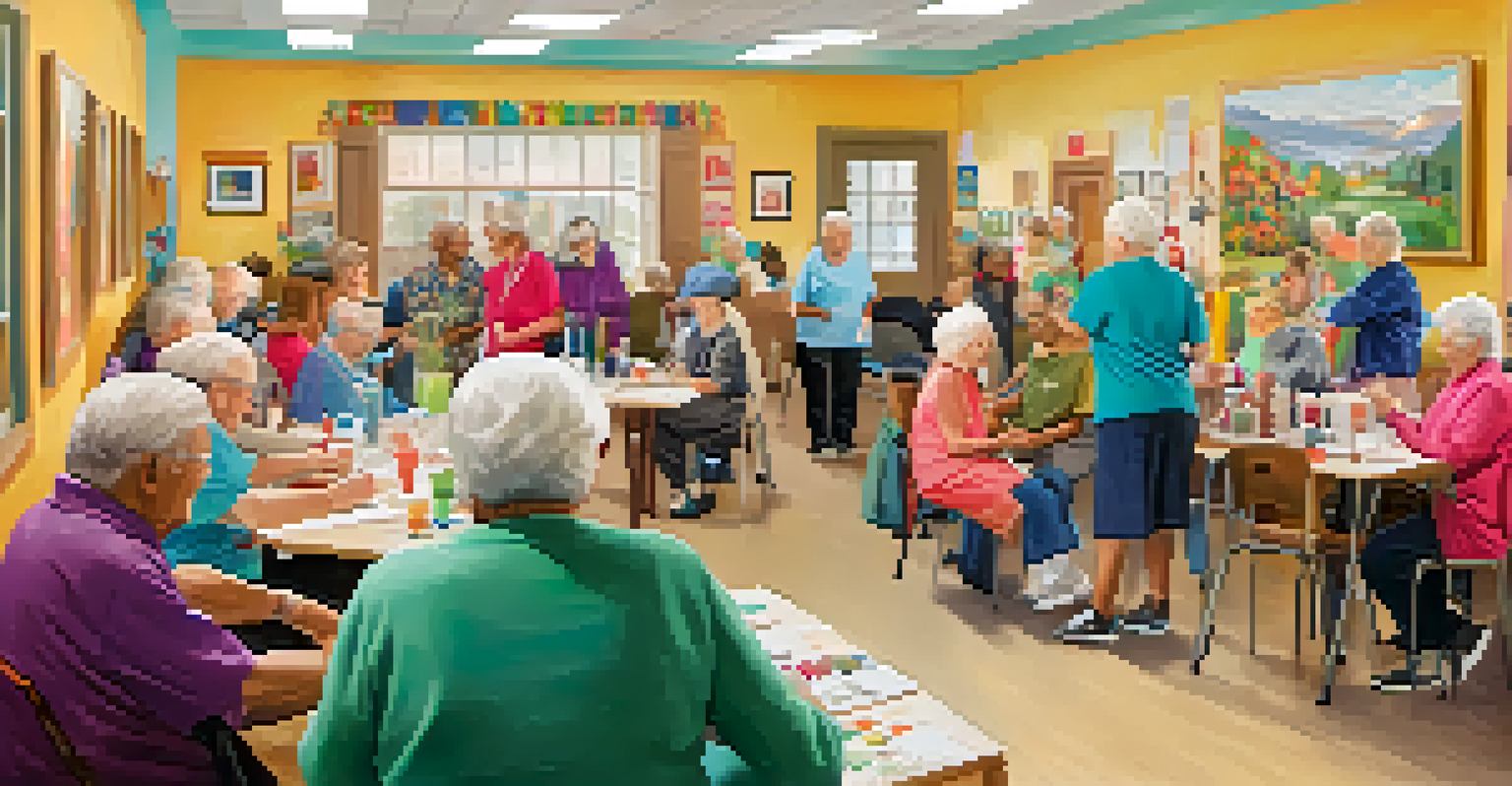Social Isolation Among California's Elderly: A Growing Concern

Defining Social Isolation in the Elderly Population
Social isolation refers to a lack of social connections and interactions, which can significantly impact the well-being of older adults. In California, many elderly individuals live alone, making them more susceptible to feelings of loneliness and disconnection. This issue is not just about being physically alone; it also encompasses emotional and social disengagement from family, friends, and community.
The greatest gift of life is friendship, and I have received it.
The effects of social isolation can be profound, leading to mental health issues such as depression and anxiety. Furthermore, it can exacerbate physical health problems, as isolated individuals may neglect their health or have less access to medical care. Understanding this definition is crucial for addressing the underlying causes and finding effective solutions.
In California, demographic shifts, including a rapidly aging population, are making this issue increasingly relevant. As the state grapples with these challenges, recognizing the specific factors contributing to social isolation among the elderly becomes essential.
Factors Contributing to Social Isolation in California
Several factors contribute to social isolation among California's elderly, including geographical distance from family, mobility issues, and health challenges. Many seniors find themselves living far away from their loved ones or may have lost their spouses and friends due to age-related circumstances. This physical distance can create a barrier to maintaining meaningful connections.

Technology also plays a dual role in this issue. While it can connect people, it can also alienate those who aren’t comfortable using digital platforms. Many elderly individuals may struggle with technology, making it harder for them to reach out or engage with others, further deepening their isolation.
Social Isolation Affects Well-Being
Social isolation significantly impacts the mental and physical health of elderly individuals, leading to issues like depression and neglect of health.
Additionally, cultural factors in California, such as language barriers and differing social norms, can leave certain groups of older adults feeling excluded. Addressing these factors is essential for developing targeted interventions that can help reduce isolation.
The Impact of Social Isolation on Mental Health
Social isolation can have a significant impact on the mental health of elderly individuals. Studies have shown that seniors who feel lonely are at a higher risk for depression and anxiety. This can create a vicious cycle, where poor mental health leads to further withdrawal from social interactions.
Loneliness and the feeling of being unwanted is the most terrible poverty.
Moreover, isolation can impair cognitive function, with research indicating that lonely seniors may experience accelerated cognitive decline. This decline can limit their ability to engage in social activities, further entrenching their isolation.
Recognizing and addressing these mental health impacts is vital for improving the overall quality of life for California's elderly population. By fostering supportive environments and encouraging social interactions, we can help mitigate these negative effects.
Physical Health Consequences of Social Isolation
The consequences of social isolation extend beyond mental health; they can also significantly affect physical health. Isolated seniors are less likely to participate in physical activities or attend regular medical appointments, which can lead to deteriorating health conditions. This can create a dangerous cycle where poor health further encourages isolation.
Research has shown that social engagement can lead to better health outcomes, including improved cardiovascular health and strengthened immune systems. Therefore, fostering connections and encouraging socialization can be a key strategy in promoting healthier lifestyles for elderly individuals.
Community Programs Combat Isolation
California's community programs aim to reduce isolation by promoting social engagement through activities and technology.
In California, addressing the physical health impacts of isolation requires a multifaceted approach, including community programs that promote both social interaction and physical activity among seniors.
Community Programs Aimed at Reducing Isolation
Many community programs in California are working to combat social isolation among the elderly. These initiatives often focus on creating opportunities for social engagement through activities such as group outings, classes, and social clubs. By bringing seniors together, these programs help foster connections and provide a sense of belonging.
Additionally, some organizations are leveraging technology to bridge the gap for those who may have mobility issues or live far from family. Virtual classes and online support groups can provide an avenue for connection, allowing seniors to engage socially from the comfort of their homes.
Community involvement is crucial in addressing this issue, and collaborations between local governments, non-profits, and health organizations can amplify these efforts. Together, they can create a robust support system for California's elderly population.
The Role of Family in Mitigating Isolation
Family members play a crucial role in combating social isolation among the elderly. Regular phone calls, video chats, and in-person visits can make a significant difference in the emotional well-being of seniors. Even small gestures, like sending a card or sharing photos, can help maintain connections and remind them they are valued.
Moreover, families can encourage their elderly loved ones to engage in community activities or seek out social opportunities. Supporting them in overcoming barriers to participation can lead to a more active and fulfilling life.
Family Connections Are Essential
Regular communication and support from family members play a crucial role in mitigating feelings of isolation among the elderly.
Ultimately, fostering open communication and prioritizing family interactions can help create a supportive environment that reduces feelings of isolation. Family involvement is a powerful tool in ensuring that elderly individuals feel loved and connected.
Long-term Solutions for Addressing Elderly Isolation
Addressing social isolation among California's elderly requires long-term, sustainable solutions. Policymakers must prioritize funding for community programs that support social engagement and mental health services tailored for older adults. Investing in these initiatives can lead to healthier, happier seniors who are more connected to their communities.
Additionally, fostering intergenerational connections can be an effective strategy. Programs that encourage interaction between younger and older generations can combat stereotypes and foster mutual understanding, enriching the lives of both groups.

Finally, raising awareness about the importance of social connections for mental and physical health is crucial. By educating the public and encouraging community involvement, we can create a culture that values the well-being of our elderly population and works to reduce isolation.